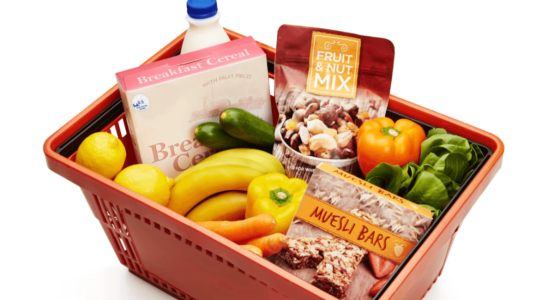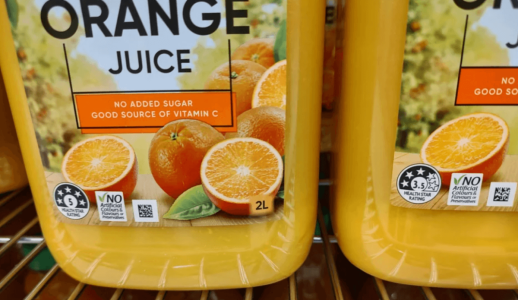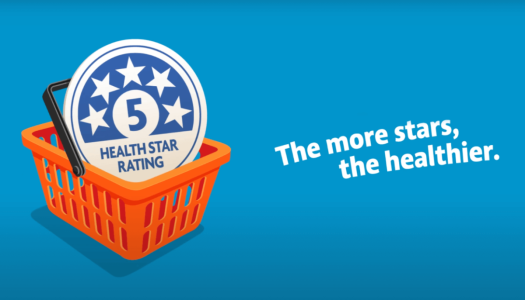Coles health star rating mystery leaves shoppers scratching their heads
- Replies 5
As we age, it's crucial to pay extra attention to our health and nutrition. One simple yet powerful step to achieve this is by checking the packaging and nutrition details of the products we buy at the supermarket.
It may seem like a tedious task, but by taking a few extra minutes to read the labels, we can make informed decisions about the food we put in our bodies.
And let's not forget, reading the label can also help us avoid any allergens or ingredients we may want to avoid.

Luckily for us shoppers, the Health Star Rating (HSR) system is here to make things a bit easier for everyone.
The Health Star Rating (HSR) system is a front-of-pack labelling system that rates the overall nutritional profile of packaged food, giving it a rating from ½ a star to 5 stars. It's a quick and easy way to compare similar packaged foods, and the more stars a product has, the healthier the choice… Usually.
Recently, though, some shoppers have been scratching their heads over the rating system. Apparently, there were identical products displaying vastly different ratings in supermarkets.
A shopper posted a picture of two bottles of Coles Orange Juice, one of which had a health rating of 5, and the other with a rating of 3.5, on the popular forum website Reddit. How is this possible?
'Something doesn't add up,' they wrote. 'All the ingredients and the calories are the same.' Is this just a coincidence, maybe a labelling mistake? Or is there something more suspicious at play? Are we being misled by food manufacturers?

Well, it turns out that Coles had a little shakeup of their rating system back in November 2020.
Businesses were given a two-year grace period to phase out products with the old ratings, but items with a long shelf life produced before the new system was introduced are exempt.
So, that means that until November 2022, products with the old ratings were still being stocked.
But don't worry, Coles is on the case, and they've apologised for any confusion this may have caused. They've also passed on customer feedback to the relevant teams to make sure that the system is as clear and transparent as possible.
So, next time you're trying to decide between two bottles of Coles-brand orange juice, you'll know that (generally) the one with the higher rating is using the old packaging. The bottle with the lower rating is more recently updated, and yes, that means they’re no longer as healthy as you thought.

But is a product with a higher Health Star Rating really better for you?
Well, the answer is not as simple as a yes or no. A product with a higher Health Star Rating may indicate that it is more nutritious compared to other products in the same category.
The Health Star Rating system takes into account a variety of factors such as energy, saturated fat, sugar, and sodium content, and assigns a rating based on a formula that gives higher ratings to products that are considered more 'nutritious'.
But here's the catch, the system is not perfect, and a higher rating does not necessarily mean that a product is healthy or suitable for everyone, especially for those who have specific dietary needs or restrictions.
Just because a product has a 5-star rating, it doesn't mean it's a green light to eat as much as you want. In fact, fruit juice (in this case) can be quite sugary.
That's why it is always important to read the nutrition information panel and ingredient list of a product to understand its nutritional content and suitability for your personal dietary needs.
So, next time you're staring at those two products on the shelf, don't just rely on the Health Star Rating, do your own research and make an informed decision that's best for you.

We hope you found this article informative and helpful, folks! It's never too late to start making healthier choices, and taking the time to check the packaging and nutrition details is a small yet impactful step towards a healthier lifestyle.
So, next time you're at the store, take a moment to check those labels and make sure you're getting the best possible options for your health. It may take a little more time, but your overall health (and your taste buds) will thank you later.
And remember, not all stars are created equal. Happy shopping!
It may seem like a tedious task, but by taking a few extra minutes to read the labels, we can make informed decisions about the food we put in our bodies.
And let's not forget, reading the label can also help us avoid any allergens or ingredients we may want to avoid.

The Health Star Rating (HSR) system is designed to help you make healthier choices as you shop. Credit: YouTube/Australian Department of Health and Aged Care.
Luckily for us shoppers, the Health Star Rating (HSR) system is here to make things a bit easier for everyone.
The Health Star Rating (HSR) system is a front-of-pack labelling system that rates the overall nutritional profile of packaged food, giving it a rating from ½ a star to 5 stars. It's a quick and easy way to compare similar packaged foods, and the more stars a product has, the healthier the choice… Usually.
Recently, though, some shoppers have been scratching their heads over the rating system. Apparently, there were identical products displaying vastly different ratings in supermarkets.
A shopper posted a picture of two bottles of Coles Orange Juice, one of which had a health rating of 5, and the other with a rating of 3.5, on the popular forum website Reddit. How is this possible?
'Something doesn't add up,' they wrote. 'All the ingredients and the calories are the same.' Is this just a coincidence, maybe a labelling mistake? Or is there something more suspicious at play? Are we being misled by food manufacturers?

A customer at Coles noticed that the 2L bottles of orange juice have different health ratings, even though they contain the same exact ingredients. Credit: Reddit.
Well, it turns out that Coles had a little shakeup of their rating system back in November 2020.
Businesses were given a two-year grace period to phase out products with the old ratings, but items with a long shelf life produced before the new system was introduced are exempt.
So, that means that until November 2022, products with the old ratings were still being stocked.
But don't worry, Coles is on the case, and they've apologised for any confusion this may have caused. They've also passed on customer feedback to the relevant teams to make sure that the system is as clear and transparent as possible.
So, next time you're trying to decide between two bottles of Coles-brand orange juice, you'll know that (generally) the one with the higher rating is using the old packaging. The bottle with the lower rating is more recently updated, and yes, that means they’re no longer as healthy as you thought.

A product with a higher Health Star Rating does not mean it's the 'healthiest' option out there. Credit: YouTube/Australian Department of Health and Aged Care.
But is a product with a higher Health Star Rating really better for you?
Well, the answer is not as simple as a yes or no. A product with a higher Health Star Rating may indicate that it is more nutritious compared to other products in the same category.
The Health Star Rating system takes into account a variety of factors such as energy, saturated fat, sugar, and sodium content, and assigns a rating based on a formula that gives higher ratings to products that are considered more 'nutritious'.
But here's the catch, the system is not perfect, and a higher rating does not necessarily mean that a product is healthy or suitable for everyone, especially for those who have specific dietary needs or restrictions.
Just because a product has a 5-star rating, it doesn't mean it's a green light to eat as much as you want. In fact, fruit juice (in this case) can be quite sugary.
That's why it is always important to read the nutrition information panel and ingredient list of a product to understand its nutritional content and suitability for your personal dietary needs.
So, next time you're staring at those two products on the shelf, don't just rely on the Health Star Rating, do your own research and make an informed decision that's best for you.
Key Takeaways
- An old Health Star Rating may still appear on Coles Orange Juice bottles until it is sold.
- This is due to the long shelf life of products that were produced before the new system was introduced, being able to be sold for up to 12 months beyond November 2022.
- The Health Star Rating system considers four components of a food – energy, saturated fat, sodium and sugar – associated with increasing the risk factors of chronic diseases.
- The system also compares foods in the same category and is designed to allow shoppers to make informed choices about the food and drinks they buy.
So, next time you're at the store, take a moment to check those labels and make sure you're getting the best possible options for your health. It may take a little more time, but your overall health (and your taste buds) will thank you later.
And remember, not all stars are created equal. Happy shopping!







